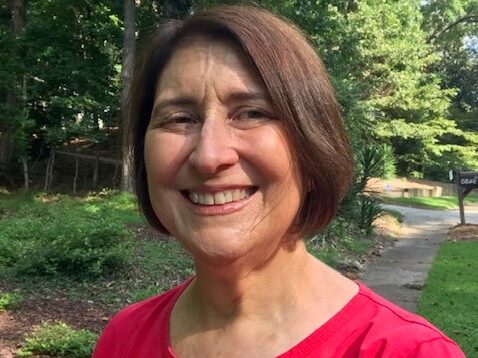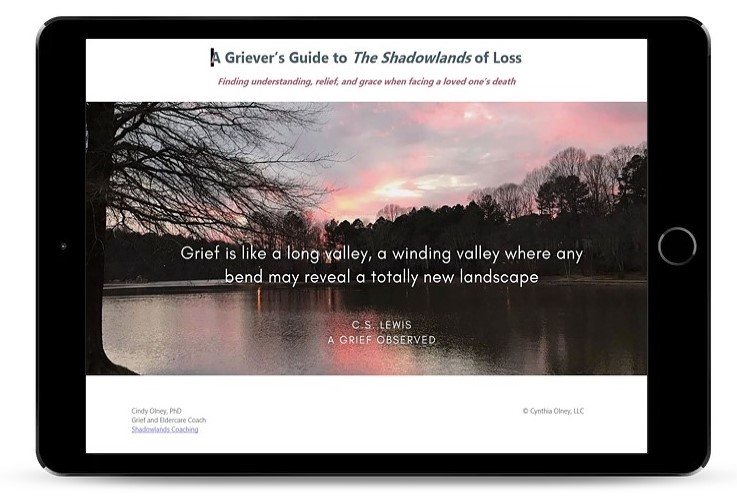Conventional wisdom predicts that your first year after loss will be pure hell.
The second year will be 10 times worse.
And you’ll never truly heal. You simply get used to grief.
Conventional wisdom is bleak.
Lucy Hone wasn’t having it.
When her adolescent daughter was killed in a traffic accident, she did what most of us would do. She searched for information on how to cope with her heartbreaking loss.
Her exploration filled her with dread. The predicted timeline for recovering from parental bereavement is five years.
She refused to accept that prognosis.
You see, Hone is a research psychologist who specializes in human resilience. She’d learned a great deal about humans’ ability to cope with the most traumatic experiences.
She’d worked with families who’d lived through devastating earthquakes. She applied the same coping strategies used with disaster victims on her own bereavement. They proved to be incredibly effective in helping her family through bereavement. She describes her experience in her book Resilient Grieving.
I wanted to be an active participant in my grieving process, focusing my limited attention and energy on the things I could do to support my well-being at this vulnerable time.” ~ Lucy Hone. Resilient Grieving
Hone’s experience makes an important point.
Death and loss are universal human experiences. We can’t control where or when we’ll face them.
How we face them is under our control. We can be proactive. We can actively support our own process and promote our own healing.
Every person’s process is unique, and we have to find what works for us. But there are some fairly common and effective practices that resilient grievers adopt when adapting to loss. Practices that any of us can adopt.
Expert Alan Wolfelt calls these practices “mourning.”
“Mourning is a verb,” he wrote in Understanding Your Grief.
Expressing Grief
Mourning is the outward expression of your inner emotional journey. It’s essential work if you want to recover completely.
Wolfelt offers a blueprint for a healing process called The Six Essential Tasks of Mourning:
- Acknowledging the reality of your loved one’s death. It takes a while to fully comprehend that your loved one is gone. A part of you continues to look for them, listen for them, reach for them, wait for them. After many rude awakenings, it starts to truly sink in that your loved one is no longer here.
- Embracing the pain of loss. You need to feel grief to heal it. That means literally sitting with the physical discomfort of grief without resisting it. But you also can’t tolerate grief for long, particularly at first. You also need to consciously distract yourself so you can relax and recuperate. It’s the cycling in and out of grieving that allows you to tolerate it’s pain.
- Remembering: You don’t end your relationship to our loved one after their death. Instead, you transform the relationship into a new form. You do this by sharing stories, carrying keepsakes, visiting favorite places, and displaying pictures.
- Adjust to a new identity: When a loved one dies, you change. You take on different social and family roles. You take on new responsibilities. You start re-envisioning your future. This is aggravating, exhausting work and requires self-compassion and the support of others.
- Sense-making: The death of a loved one makes you question your assumptions about existence. You reflect on and re-examine your beliefs about life and the afterlife. You come to grips with how your loved one died and why. You imagine ways to keep your loved one’s spirit and memory alive or make your loved one’s life or death mean something.
- Building a grief support team: You need to maintain a supportive team of friends. Grief educator David Kessler advises that every grieving person needs someone who can listen, someone who can go deep with them, and someone who can distract them. These are the people you keep close. And you need to draw strong boundaries with those who encourage you to deny or avoid your grief.
I know, it’s a formidable list.
There’s no getting past the fact that grieving is an ordeal. It takes time, patience, and endurance.
And a lot of help from your friends.
Grief is the noun; mourning is the verb. Grief is the vehicle; mourning is the engine. Grief is the rock; mourning is the catapult. ~ Alan Wolfelt, Understanding Your Grief
To be honest, I've found that bereaved people are drawn naturally to work through these tasks. Their biggest struggle is recognizing that these are normal and healing activities.
The Six Tasks aren’t a to-do list. They’re signs that you’re on the right path.
This is what healthy bereavement looks like.
You’ve Got This
Every grief journey is unique. The Six Tasks of Mourning provide the blueprint.
Your work is to find a way through them that works best for you.
If the idea of actively engaging in grief is too daunting, take your time. Find your pace. Get support from experts. Seeking help fits right into this
Trust yourself.
You can heal from your loss and find your way back to a meaningful and joyful life.
Questions about grief coaching?
I'm a grief coach who guides bereaved clients through a resilient grieving process.
My coaching uses proven methods for helping people adapt to life after loss. You’ll learn exactly how to work with intense emotions, so they cause you less suffering. You’ll know how to recognize your own healing progress, giving you hope that life can feel easier again. You'll use your healing journey to get clear on what matters most to you, so you can recreate a life after loss that truly feels worth living. Y
ou can learn more about my program by visiting my Work With Me page. Or check out this short video.
I offer free discovery calls for anyone who wants to meet me and ask questions about my program. These are free informational calls, and there's no obligation to work with me. You can call if you’re interested in working with me or referring me to someone you know.
Working with a grief coach can be game-changing. You can actively engage in your grief and start feeling progress quickly. You can start seeing the possibility of a fulfilling, enjoyable life after loss.

And you don't have to feel so alone. Let’s chat.
Not ready up for a call yet?
Send me an email at cindy@shadowlandscoaching.com.
Get A Griever's Guide to the Shadowlands of Grief
Have you recently lost someone dear to you? Or are you worried about someone who has? Download your free copy of A Griever's Guide to The Shadowlands of Loss. It covers some key elements to grieving and a few helpful strategies that can ease your experience of grief.
